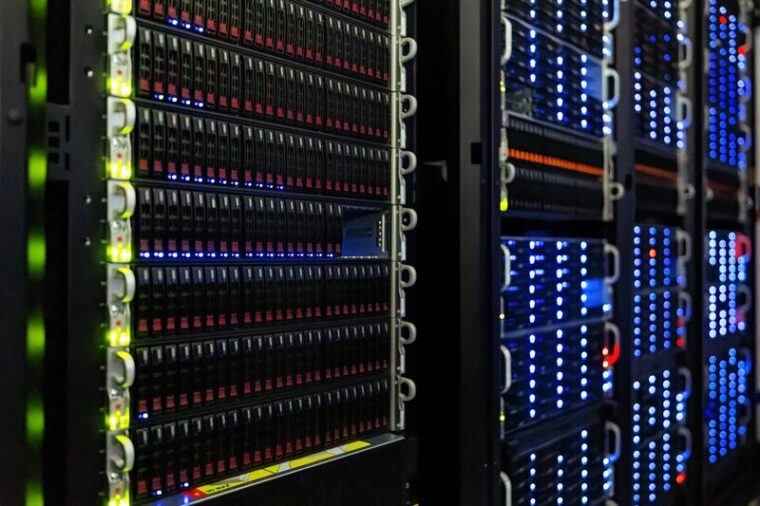
After decades of relatively flat electricity demand, a surge of new data centers powering the artificial intelligence revolution are creating a challenge for the electrical grid to create enough energy.
At a conference hosted by the White House last week, representatives from various levels of government, technology companies and electric utility providers convened to develop strategies for managing the new electric demand. The conference brought together some of the largest tech companies at the forefront of AI including Alphabet, Meta and Microsoft along with senior officials at the Departments of Commerce and Energy.
The rise in AI data centers comes while the U.S. is looking to clean up the grid by bolstering renewable energy sources while slowly phasing out fossil fuel energy that contributes to climate change. This presents a dual challenge to both meet new demands while still accomplishing an energy transition.
RELATED: Only 22% of states have AI-ready data quality programs, survey finds
The scale of this challenge is significant, with data centers expected to more than double by the end of the decade. According to the Electric Power Research Institute, data centers could consume up to 9% of U.S. electricity generation annually by 2030, up from 4% in 2023. This surge is largely driven by the rapid growth in artificial intelligence applications and searches, which require substantial computational power.
In response to these challenges, the White House has announced several key initiatives:
A new Task Force on AI Data Center Infrastructure: Led by the National Economic Council, National Security Council, and the White House Deputy Chief of Staff’s office, this task force will coordinate policies to advance data center development in line with economic, national security, and environmental goals.
Enhanced permitting assistance: The administration plans to scale up technical assistance for data center permitting at federal, state, and local levels, aiming to streamline the development process without compromising environmental standards.
Department of Energy engagement: The DOE is forming an AI data center engagement team to leverage existing programs in supporting AI data center development. This team will bring together a suite of resources including loans, grants, tax credits, and technical assistance to help data center owners and operators secure clean, reliable energy solutions.
Repurposing coal sites: The administration is exploring opportunities to repurpose closed coal sites for data center development, potentially turning environmental liabilities into assets for the AI revolution.
These initiatives are part of a broader strategy for increasing electricity supply outlined in a report from the DOE, which proposes a portfolio of solutions spanning the entire power system. These include deploying clean generation and storage technologies, enhancing grid infrastructure and maximizing energy efficiency.
DOE has outlined several funding opportunities for states and project developers to get assistance meeting the new needs from data centers with clean electricity.
One of the cornerstone programs is the Title 17 Innovative Energy Loans, which offers loan guarantees for projects deploying clean energy technologies. Complementing this, the Grid Resilience and Innovation Partnerships program provides $10.5 billion in federal funding to support projects that enhance grid resilience and technology to make the grid more efficient and reliable. One funding program designed for state agencies to apply is the Energy Efficiency Revolving Loan Fund Capitalization Grant Program, which offers $250 million to establish revolving loan funds for energy efficiency upgrades and retrofits.
The DOE is also targeting specific clean energy sectors to help meet new energy demand. The Civil Nuclear Credit Program aims to preserve the existing nuclear fleet, which can provide carbon-free baseload power crucial for data centers. Similarly, Hydroelectric Incentive Programs offer over $750 million to support energy production and efficiency improvements at existing hydropower facilities.
For improving power distribution, the Transmission Facilitation Program provides $2.5 billion in commercial support for qualified transmission projects. These funding opportunities demonstrate the DOE’s strategic investments in meeting the energy challenges posed by increasing data center demand while advancing clean energy goals.
NOIRLab/NSF/AURA/T. Slovinský, CC BY 4.0 https://creativecommons.org/licenses/by/4.0, via Wikimedia Commons
The post White House outlines strategy for managing electricity needs for AI data centers appeared first on Government Market News.
